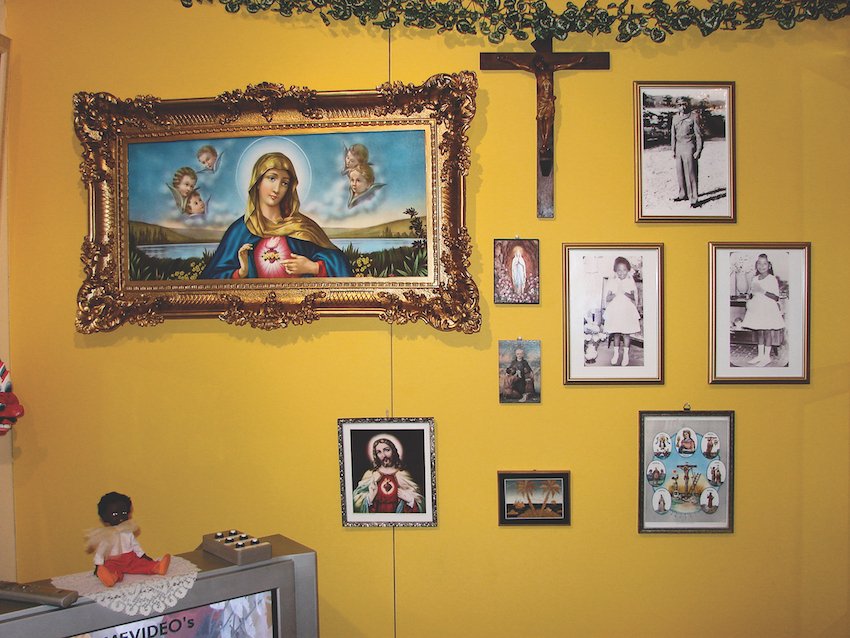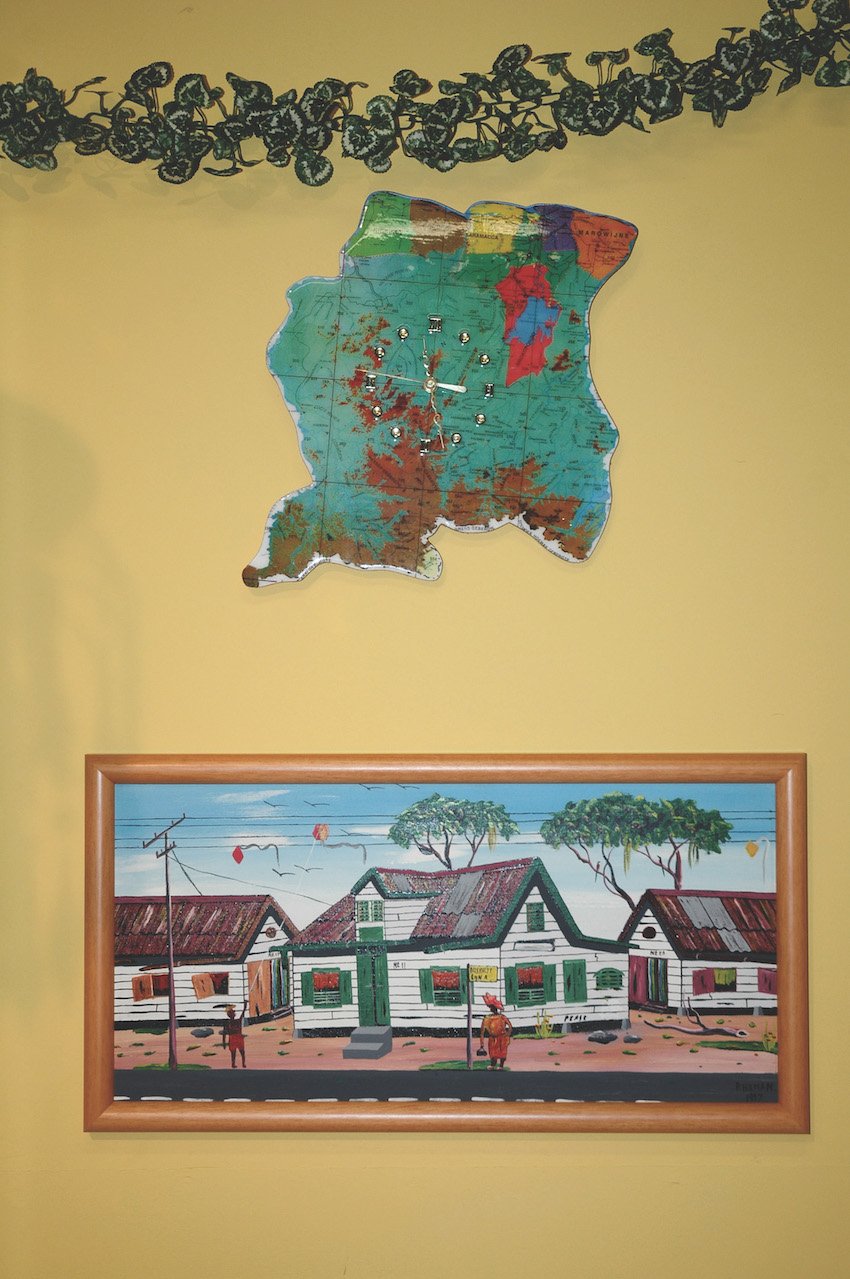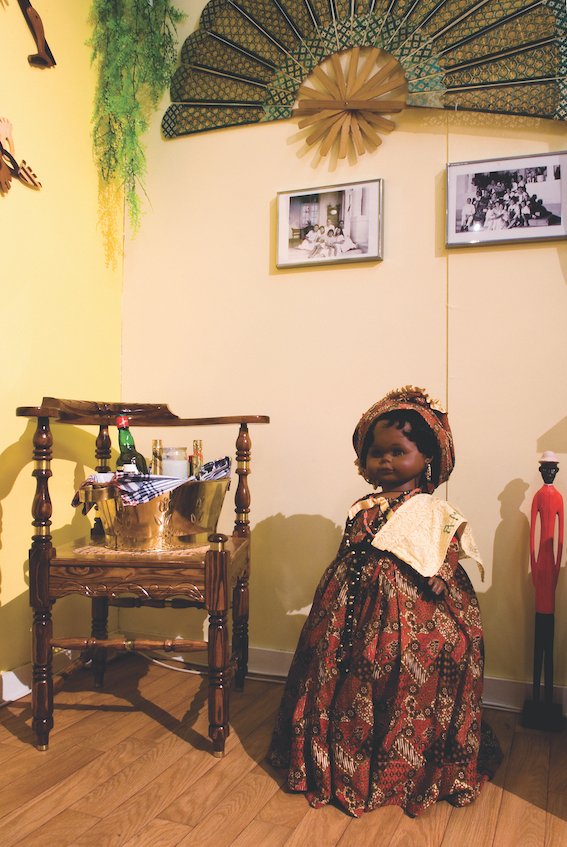Van Huis Uit: The living room of migrants in The Netherlands
Following the success of The West Indian Front Room, McMillan was invited to create work with Moroccan, Surinamese, Antillean and Indonesian migrant communities to create a living room installation at Imagine IC (Identity and Culture) in Amsterdam, the Netherlands.
Migration to the Netherlands from Morocco, Suriname and the Antilles did not commence on a large scale until the early 1970’s, when for instance Suriname gained independence in 1975. The A.B.C islands of Aruba, Bonaire and Curacao, as well as St. Maarten, Saba, St. Eustatius make up the Dutch Antilles, and remain colonial territories. Indonesia, known as the Dutch East Indies, acquired independence in 1949, though from at least the late 19th century there has been an Indonesian, and ethnically mixed Indo-European presence in the Netherlands.
Imagine IC is based in the Bijlmer, Amsterdam-Zuidoost (South-East), where Surinamese, Nigerian, Ghanian and Antillean migrant communities have settled. Curatorially, the living room installation materials were sourced locally through support from a range of individuals including Anass Bendrif (Morocco) and Abdelmoeim Acherrat, who ran a stall in the large Beverwijk ‘Black’ Market (outside Amsterdam) selling traditional ornaments prized by many Moroccans.
The exhibition was eventually entitled, Van Huis Uit, which loosely means ‘originally from by my mother’s knee’ and opened at Imagine IC in 2007, then toured to the OBT:Biblotheek Midden-Brabant (Central Library Tilburg), where it was re-titled That’s the way we do it! and co-ordinated by Chris Gribling, and then Stephanus Church, Utrecht, where it was co-ordinated by Nancy Jouwe.
The central living room installation was designed in a contemporary Dutch metropolitan or IKEA minimalist architectural style with laminated wooden floors. Designed and built by Remco Swart, three walls were painted in three distinct colours that symbolised the different migrant heritages of an ethnically mixed fictional family that the living room belonged to: terracotta orange (Moroccan), colonial cream (Indonesian) and tropical yellow (Surinamese and Antillean).
There was a soundscape of noisy neighbours created by Robert Bosch, and on a wide screen television was screened six Home Videos, video diaries from local migrant families about their living rooms made in collaboration with video artists/filmmakers: Randy Lourens, Wen-Jie Qin, Abdellatif Benfaidoul, Ahmed Farah, Selby Gildemacher and Mayura Subhedar. There was also a computer game, Impaccen, where four players could compete to design their own living room that was developed by MA Media Students from HKU (University of the Arts Utrecht).
Materials displayed in the installation represented the intersection of religious and ethnic identities of Moroccan, Indonesian, Surinamese and Antillean migrant communities. For instance, Suriname’s diverse culture was symbolised with a Hindu alter, and sacraments from the syncretic religion practice of Winti, with Santeria from the Antillean Curacao. There were also numerous talismans for protection, such as an aloe vera cutting hanging over the front door. Standing in one corner was a doll symbolising Mama Isha, Mother Earth, the supreme power in the Winti religion, who as a guardian took the form of a large black doll dressed in traditional Kotomisi style. She was prepared by Agnes Fraenk, a Winti priestess, who gave her the Ghanian female name Ama, as she was born on a Saturday when I bought her. I asked Agnes to perform a cleansing ritual before the opening of the exhibition at Imagine IC.
I also collaborated with Don’t Hit Mama, a local hip-hop dance company, who used the outline of the installation before it was built, to present a devised performance piece that explored intergenerational struggles in the living room of their ethnically hybrid migrant parents.
Dressing up the toilets
To enhance the domestic aesthetic and atmosphere of the exhibition, the unisex toilets at Imagine IC were ‘dressed up’ with a blue plastic transparent toilet seat featuring fishes, lace toilet holders, kitsch-styled toilet brushes and holders, and other accessories and toiletries. And written on Delft Bleu styled tiles, were superstitions, taboos and ‘old-time’ knowledge translated in different migrant languages: Sranan Tong (Suriname creole), Papiamento (Antillean creole), Arabic (Moroccan), Indonesian, Dutch and English. For instance, in Islam the right hand is used to shake hands while the left hand is used clean the body after using the toilet.













